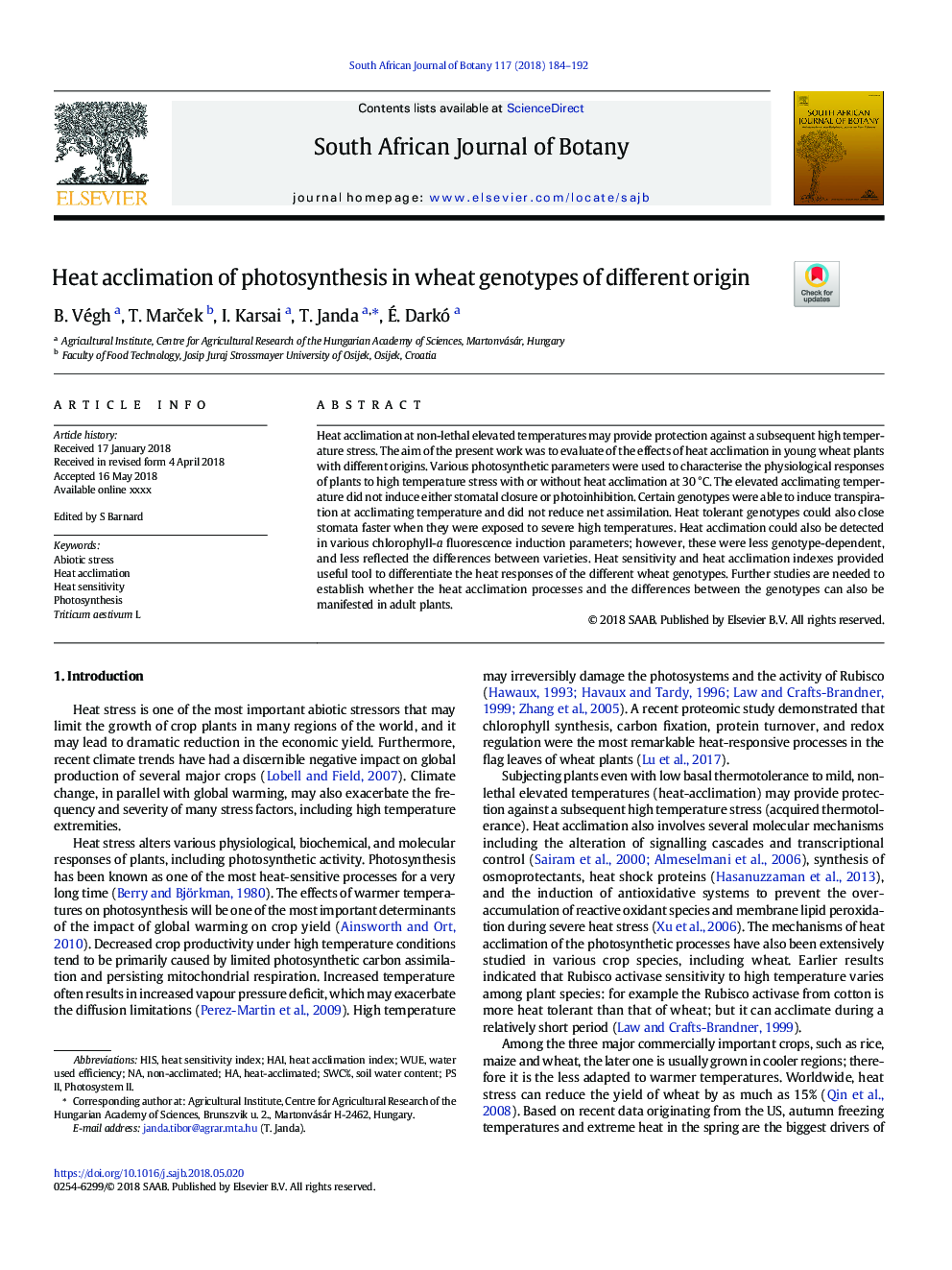| Article ID | Journal | Published Year | Pages | File Type |
|---|---|---|---|---|
| 8882275 | South African Journal of Botany | 2018 | 9 Pages |
Abstract
Heat acclimation at non-lethal elevated temperatures may provide protection against a subsequent high temperature stress. The aim of the present work was to evaluate of the effects of heat acclimation in young wheat plants with different origins. Various photosynthetic parameters were used to characterise the physiological responses of plants to high temperature stress with or without heat acclimation at 30â¯Â°C. The elevated acclimating temperature did not induce either stomatal closure or photoinhibition. Certain genotypes were able to induce transpiration at acclimating temperature and did not reduce net assimilation. Heat tolerant genotypes could also close stomata faster when they were exposed to severe high temperatures. Heat acclimation could also be detected in various chlorophyll-a fluorescence induction parameters; however, these were less genotype-dependent, and less reflected the differences between varieties. Heat sensitivity and heat acclimation indexes provided useful tool to differentiate the heat responses of the different wheat genotypes. Further studies are needed to establish whether the heat acclimation processes and the differences between the genotypes can also be manifested in adult plants.
Keywords
Related Topics
Life Sciences
Agricultural and Biological Sciences
Agronomy and Crop Science
Authors
B. Végh, T. MarÄek, I. Karsai, T. Janda, Ã. Darkó,
